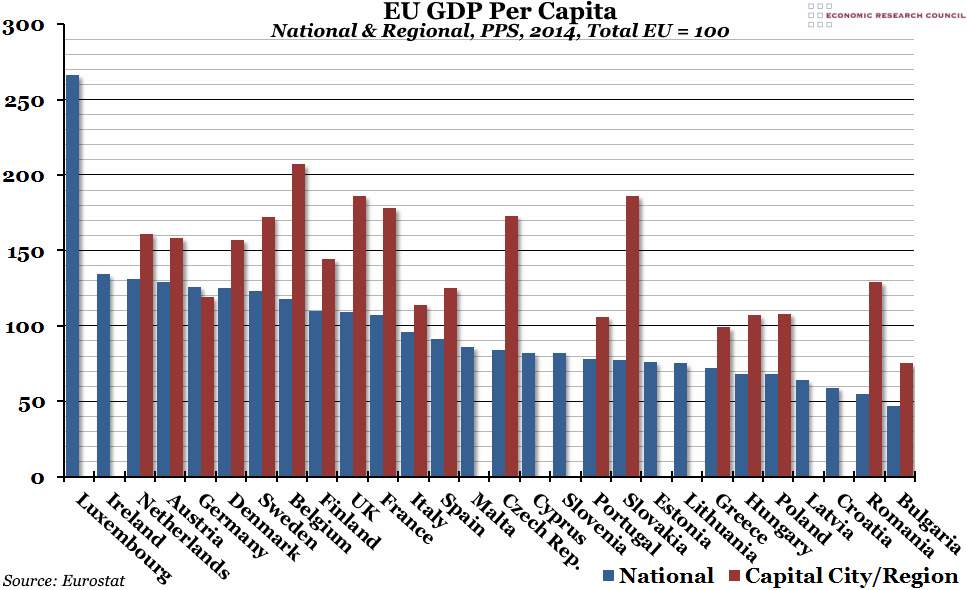
Summary
At the end of last week, Eurostat released a report on regional GDP per capita across the EU. Inner West London was the region with the highest economic output per person (more than five times the EU average), while Severozapaden in Bulgaria had the lowest (30% of the EU average). The contrast between capital cities and the rest of the EU looks large.
What does the chart show?
The blue bars in the chart represent 2014 GDP per capita in Purchasing Power Standard (PPS) terms for each EU country, indexed so that the average across the whole EU is equal to 100. The red bars represent the same thing, but for either capital cities of each country, or regions containing the capital city, depending on what data is available. GDP per capita is a measure of economic output per person, and the PPS acts as an artificial “universal currency” between the countries that takes into account differences in national currencies and price levels.
Why is the chart interesting?
On a national scale, 11 of the 28 EU countries have an above-average GDP per capita. Of the remaining 17, only two countries (Greece and Bulgaria) have capital cities with lower GDP per capita than the EU as a whole (and Athens’ GDP per capita is 99% of the EU’s, so the difference is negligible). It isn’t surprising that capital cities have a high GDP per capita – they are, almost by definition, dense centres of economic activity – but what is surprising is the extent to which capital cities, even in less economically developed regions of the EU, can outperform richer nations. Bucharest, for example, has a higher GDP per capita than all EU countries barring Luxembourg (which is a bit of an outlier), despite Romania having the second lowest GDP per capita in the EU (at 55% of the EU average).
There are two interesting sidenotes. The first is that Berlin is the only capital city to have a lower GDP per capita than its host country. This is partly due to Berlin not being an economic centre on the same level as places like London or Paris, but also partly a reflection of the more evenly distributed nature of Germany’s economy. German economic output is spread out across (almost) the whole country, rather than being concentrated in one place. The second is that in pure GDP terms (not per capita), London is larger than not only all other EU cities, but also most other countries. With a total GDP in 2014 of €509bn, if London was independent it would be the EU’s 8th largest economy, behind Germany, France, Italy, the rest of the UK, Spain, the Netherlands, and Poland.

